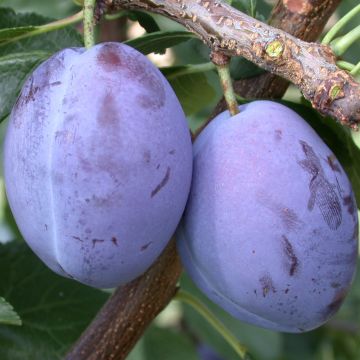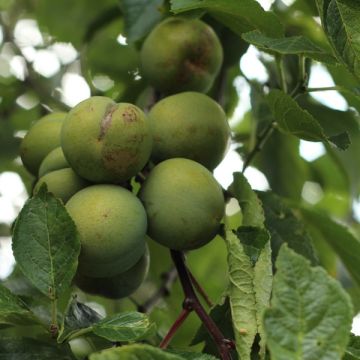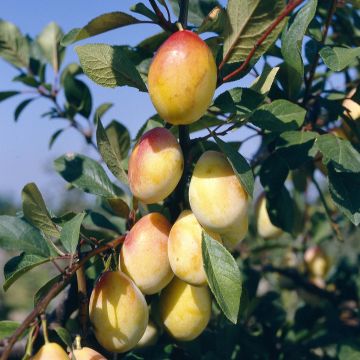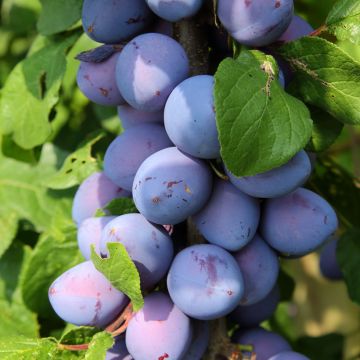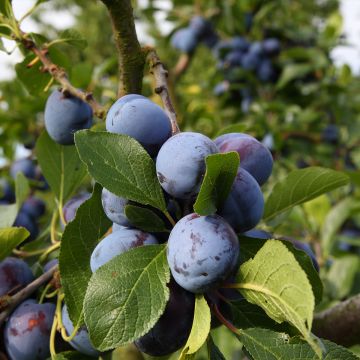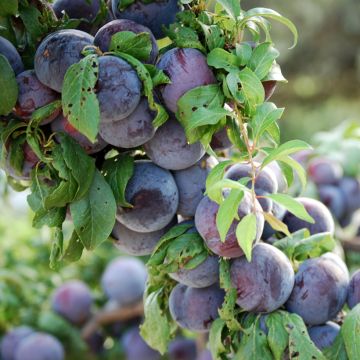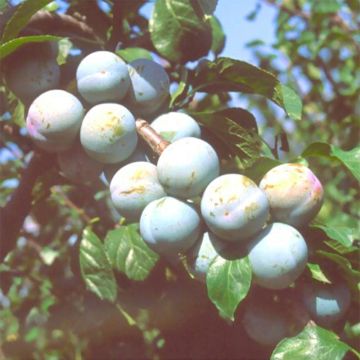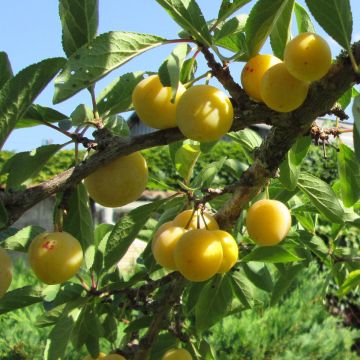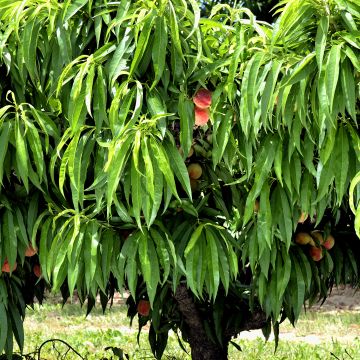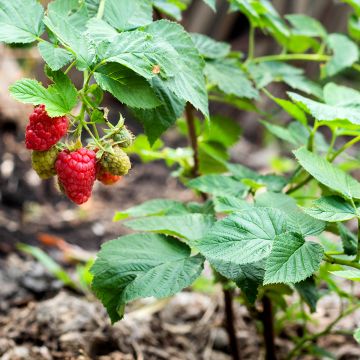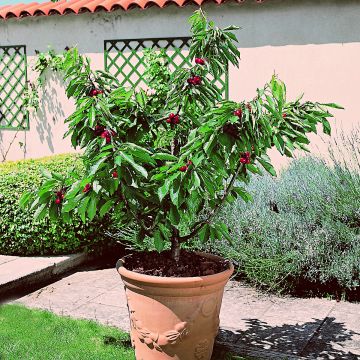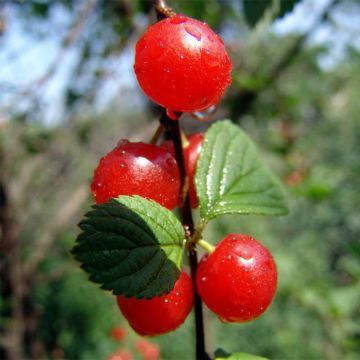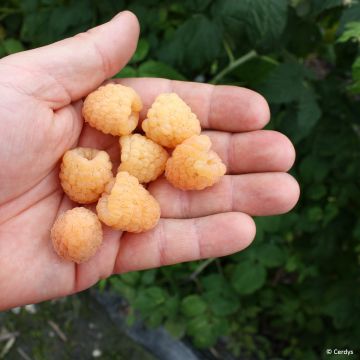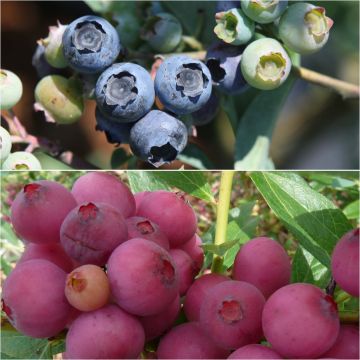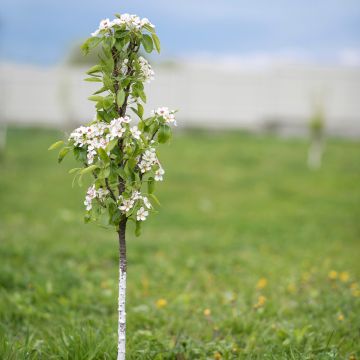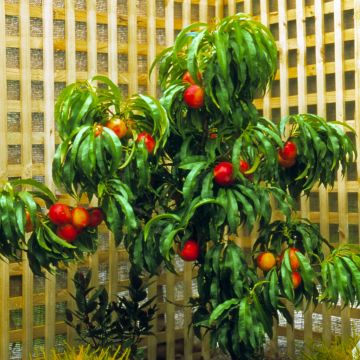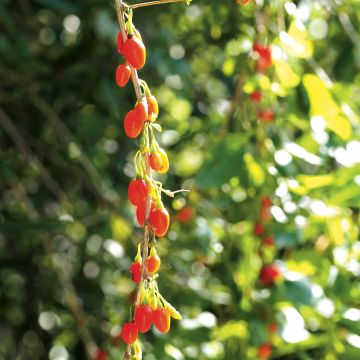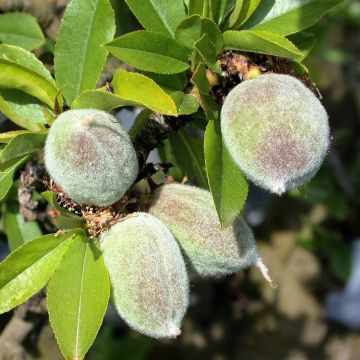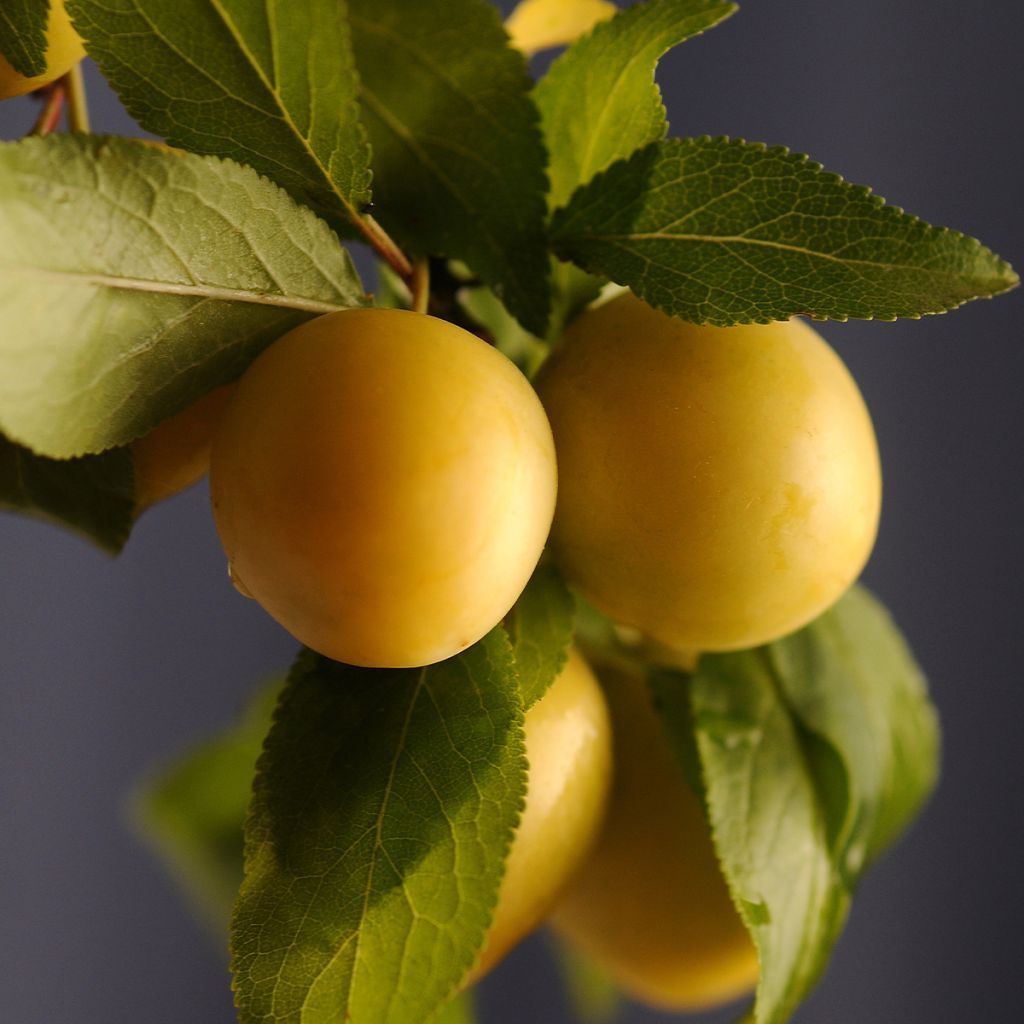

Prunus domestica Reinegold- Common plum
Prunus domestica Reinegold- Common plum
Prunus domestica Reinegold®
European plum, Common plum, Garden plum
This item cannot be shipped to the selected country
Delivery charge from €5.90
Delivery charge from €5.90
Delivery to Corse prohibited
More information
Schedule delivery date,
and select date in basket
This plant carries a 6 months recovery warranty
More information
We guarantee the quality of our plants for a full growing cycle, and will replace at our expense any plant that fails to recover under normal climatic and planting conditions.
From €5.90 for pickup delivery and €6.90 for home delivery
Express home delivery from €8.90.
From €5.90 for pickup delivery and €6.90 for home delivery
Express home delivery from €8.90.
Delivery to Corse prohibited: UE law prohibits the import of this plant from mainland France to Corse as part of the fight against Xylella fastidiosa. Please accept our sincere apologies.
More information
Description
Prunus domestica 'Reinegold' is a low-growing variety. It forms a small bush only 3.5m (11ft) tall, making it a great choice for small gardens. This self-fertile plum tree blooms in March-April with white flowers that attract bees. These flowers develop into large round plums, with a beautiful golden yellow colour. They ripen in August. Their firm flesh is sweet and fragrant. The plums can be eaten fresh, or cooked in tarts and jams. This hardy tree should be grown in full sun in well-drained ordinary soil.
Plum trees are part of the extensive Rosaceae family, which includes most temperate climate fruit trees (apples, pears, apricots, peach, cherries, and quince), as well as small fruits (blackberries, raspberries, strawberries). The Prunus genus itself is extremely large, with over 300 species, both fruit-bearing (almond, peach) and ornamental, including numerous ornamental trees and shrubs. Prunus domestica is probably native to Asia Minor (Syria) and would have been introduced to Rome, along with many other species, following the Roman conquests. According to some authors, its introduction to Europe may be more closely linked to the Crusades.
'Reinegold' is perfect for small gardens due to its compact size (approximately 3 to 3.50m (10 to 11ft) tall and 2m (7ft) wide). This variety, closely related to the 'Golden Reine Claude' plum (cultivated since at least the 16th century), is perfectly self-fertile and therefore does not require pollination by another plum tree. In March-April, clusters of single white flowers with 5 petals appear, which are attractive to bees. Once pollinated, the flowers develop into drupes, the fleshy stone fruits known as plums. These plums are round and large, and have a beautiful golden yellow colour. They ripen in August and can be harvested then. Their firm and juicy flesh is sweet and aromatic. These fruits can be consumed fresh as soon as they are harvested, and can also be used in tarts and jams. They can also be used to make brandy. Plums are refreshing fruits and relatively low in calories. They are rich in vitamin E.
Hardy to at least -20°C (-4°F), the plum tree is an easy-to-cultivate tree, resistant to diseases, and not very demanding once well established.
'Reinegold' will find its place in most gardens. Plant it with other dwarf fruit trees to create a small orchard. The dwarf 'Belle Hélène' pear tree will be a great companion, with its juicy and sweet fruits in September-October. To spread out your harvests throughout summer, plant the dwarf 'Griotella' cherry tree for beautiful harvests in July.
Report an error about the product description
Prunus domestica Reinegold- Common plum in pictures
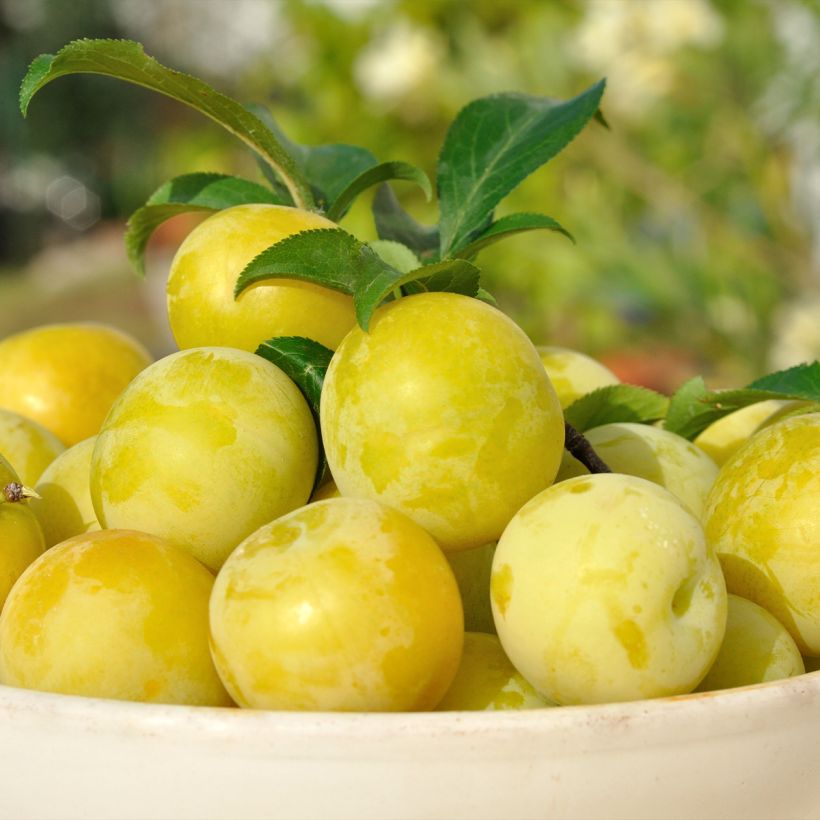

Plant habit
Fruit
Flowering
Foliage
Botanical data
Prunus
domestica
Reinegold®
Rosaceae
European plum, Common plum, Garden plum
Cultivar or hybrid
Other Plum Trees
Planting and care
It prefers deep clay-limestone soil that is not too dry. It can adapt to other types of soil. It is quite demanding in terms of sunlight.
This tree likes deep soils. Dig a planting hole at least 50cm (20in) on all sides. It also appreciates some humidity, so water it regularly in summer and autumn in the first years. Once well rooted, it is a hardy and undemanding tree.
Planting period
Intended location
Care
This item has not been reviewed yet - be the first to leave a review about it.
Fruit trees for small gardens
Haven't found what you were looking for?
Hardiness is the lowest winter temperature a plant can endure without suffering serious damage or even dying. However, hardiness is affected by location (a sheltered area, such as a patio), protection (winter cover) and soil type (hardiness is improved by well-drained soil).

Photo Sharing Terms & Conditions
In order to encourage gardeners to interact and share their experiences, Promesse de fleurs offers various media enabling content to be uploaded onto its Site - in particular via the ‘Photo sharing’ module.
The User agrees to refrain from:
- Posting any content that is illegal, prejudicial, insulting, racist, inciteful to hatred, revisionist, contrary to public decency, that infringes on privacy or on the privacy rights of third parties, in particular the publicity rights of persons and goods, intellectual property rights, or the right to privacy.
- Submitting content on behalf of a third party;
- Impersonate the identity of a third party and/or publish any personal information about a third party;
In general, the User undertakes to refrain from any unethical behaviour.
All Content (in particular text, comments, files, images, photos, videos, creative works, etc.), which may be subject to property or intellectual property rights, image or other private rights, shall remain the property of the User, subject to the limited rights granted by the terms of the licence granted by Promesse de fleurs as stated below. Users are at liberty to publish or not to publish such Content on the Site, notably via the ‘Photo Sharing’ facility, and accept that this Content shall be made public and freely accessible, notably on the Internet.
Users further acknowledge, undertake to have ,and guarantee that they hold all necessary rights and permissions to publish such material on the Site, in particular with regard to the legislation in force pertaining to any privacy, property, intellectual property, image, or contractual rights, or rights of any other nature. By publishing such Content on the Site, Users acknowledge accepting full liability as publishers of the Content within the meaning of the law, and grant Promesse de fleurs, free of charge, an inclusive, worldwide licence for the said Content for the entire duration of its publication, including all reproduction, representation, up/downloading, displaying, performing, transmission, and storage rights.
Users also grant permission for their name to be linked to the Content and accept that this link may not always be made available.
By engaging in posting material, Users consent to their Content becoming automatically accessible on the Internet, in particular on other sites and/or blogs and/or web pages of the Promesse de fleurs site, including in particular social pages and the Promesse de fleurs catalogue.
Users may secure the removal of entrusted content free of charge by issuing a simple request via our contact form.
The flowering period indicated on our website applies to countries and regions located in USDA zone 8 (France, the United Kingdom, Ireland, the Netherlands, etc.)
It will vary according to where you live:
- In zones 9 to 10 (Italy, Spain, Greece, etc.), flowering will occur about 2 to 4 weeks earlier.
- In zones 6 to 7 (Germany, Poland, Slovenia, and lower mountainous regions), flowering will be delayed by 2 to 3 weeks.
- In zone 5 (Central Europe, Scandinavia), blooming will be delayed by 3 to 5 weeks.
In temperate climates, pruning of spring-flowering shrubs (forsythia, spireas, etc.) should be done just after flowering.
Pruning of summer-flowering shrubs (Indian Lilac, Perovskia, etc.) can be done in winter or spring.
In cold regions as well as with frost-sensitive plants, avoid pruning too early when severe frosts may still occur.
The planting period indicated on our website applies to countries and regions located in USDA zone 8 (France, United Kingdom, Ireland, Netherlands).
It will vary according to where you live:
- In Mediterranean zones (Marseille, Madrid, Milan, etc.), autumn and winter are the best planting periods.
- In continental zones (Strasbourg, Munich, Vienna, etc.), delay planting by 2 to 3 weeks in spring and bring it forward by 2 to 4 weeks in autumn.
- In mountainous regions (the Alps, Pyrenees, Carpathians, etc.), it is best to plant in late spring (May-June) or late summer (August-September).
The harvesting period indicated on our website applies to countries and regions in USDA zone 8 (France, England, Ireland, the Netherlands).
In colder areas (Scandinavia, Poland, Austria...) fruit and vegetable harvests are likely to be delayed by 3-4 weeks.
In warmer areas (Italy, Spain, Greece, etc.), harvesting will probably take place earlier, depending on weather conditions.
The sowing periods indicated on our website apply to countries and regions within USDA Zone 8 (France, UK, Ireland, Netherlands).
In colder areas (Scandinavia, Poland, Austria...), delay any outdoor sowing by 3-4 weeks, or sow under glass.
In warmer climes (Italy, Spain, Greece, etc.), bring outdoor sowing forward by a few weeks.



































